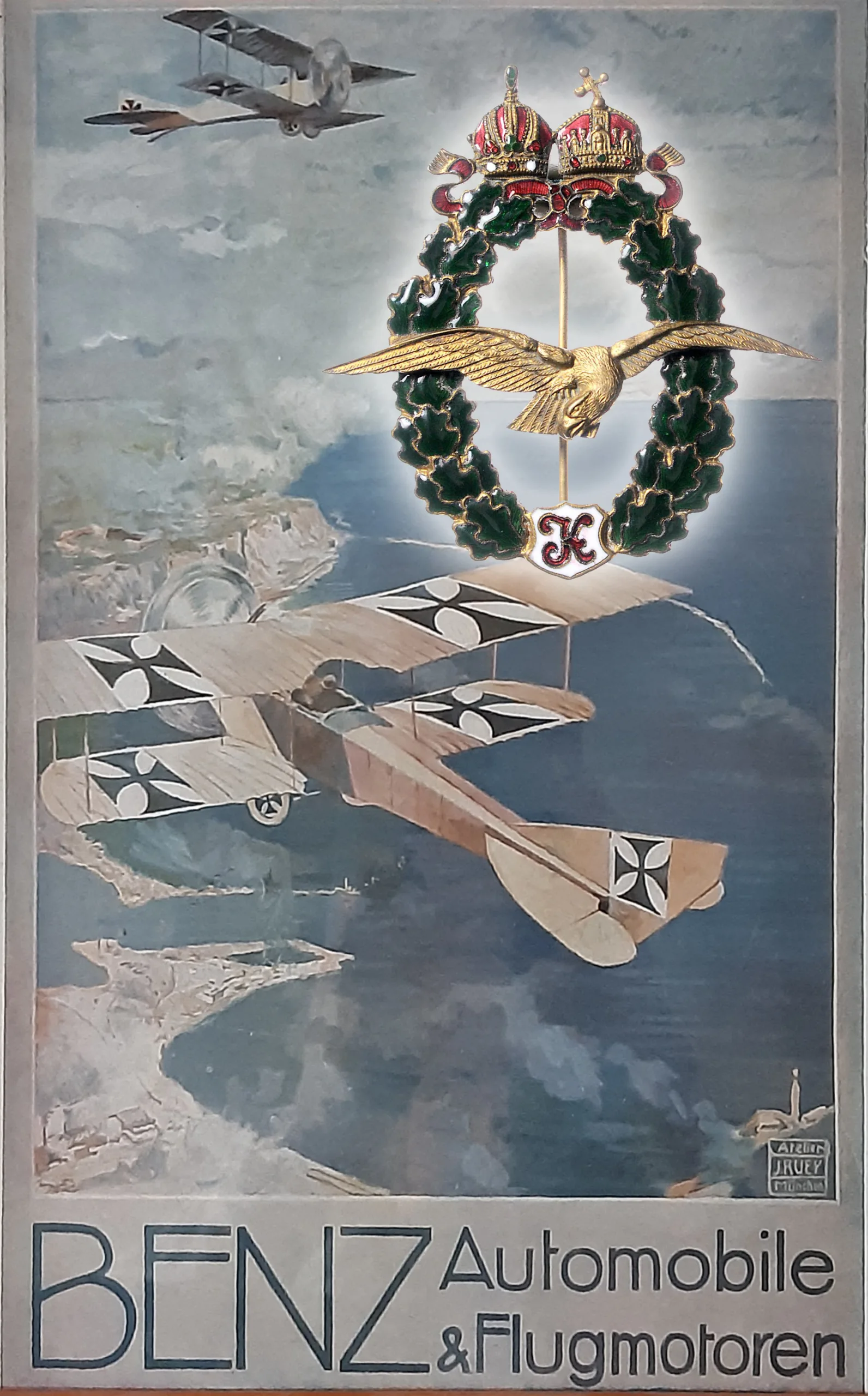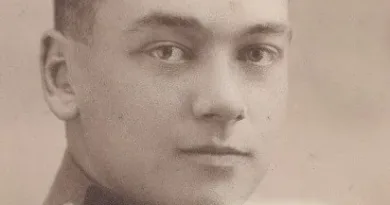Field pilot badge 1917
The second part of Gábor Széplaki’s post series on the A-H field pilot badges:
On November 21, 1916, after nearly 68 years of reign, Emperor Franz Joseph I passed away at the age of 86. His successor on throne was Charles Franz Joseph of Habsburg-Lorraine, who was crowned Emperor of Austria under Charles I. and as King Charles IV. of Hungary. The change of ruler, in its order and manner, also brought about changes in the monarchy’s system of honor and symbolism.
In the case of the badge we are discussing, only the monogram of the ruler was initially replaced, so the field pilot badge introduced in 1913 was still used only the initial on the white enamel shield changed. The monogram of Charles I appeared there.


The war dragged on, and demanded ever-increasing human and material sacrifices from the Monarchy, both on the fronts and in the hinterland. The empire relied heavily on Hungary, where, like the rest of the empire, people began to get tired of the hopeless warfare. The ruler, emphasizing the dualistic nature of the empire and the common sacrifice, included the Hungarian holy crown of the same size in the symbol system of the empire in addition to the imperial crown. He wanted to emphasize and acknowledge Hungary’s equal role in the war in the state frames of the Monarchy.
The above change also affected the field pilot awards. Circular No. Abt. 13, 44252 of October 2, 1917, published in Commonwealth Gazette No. 47/1917, stated the changed design.

The material of the newly introduced field pilot badge was still gilded and enameled tombac. There remained the wreath of oval oak leaves in dark green enamel, already known from the 1913 badge, framing an eagle bird with extended wings painted matte black. The wings of the eagle were riveted to the enameled wreath. The upper part of the badge was closed on the right by the imperial crown and on the left by the Hungarian holy crown of the same size. At the bottom of the badge, on the white enameled coat of arms, was the red, “K” monogram of the new ruler, Charles I.
The insertion of the badge differed from the previous version, which also appeared in the circular decree:
“… The insertion of the badge was replaced by hooks instead of the usual needle. … ”
The two small hooks with the open ends facing the inside of the badge were soldiered at the back of the double crown and the white shield on the back of the badge. Modifications to the fixing were introduced at the request of soldiers on the front, taking into account the manufacturer’s recommendations, as the original needle system was not practical in field conditions and also increased the cost of producing the badge. The manufacturer and supplier of the badge continued to be the Zimbler company in Vienna. The manufacturer’s master mark can be seen on the back of the eagle.

The cases of the badge were also supplied by Zimbler. The 95x85x15 mm simple, two-part red cardboard box was the result of a shortage of materials and cost savings at the end of the war. At the top of the box was either the imperial coat of arms or the words ‘Feldpilotenabzeichen’.
It was worn in the same place as before, in the middle of the upper right pocket of the tunic. Miniature versions were worn proudly by the pilots of the Monarchy on caps or picks, as well as in civilian clothing after the war.

After the war, the claimants ordered field pilot badges from various manufacturers to replace their lost / damaged / destroyed badges, which resulted in a variety of pieces with smaller and larger differences from each other in the 1920s, 1930s and 1940s.





